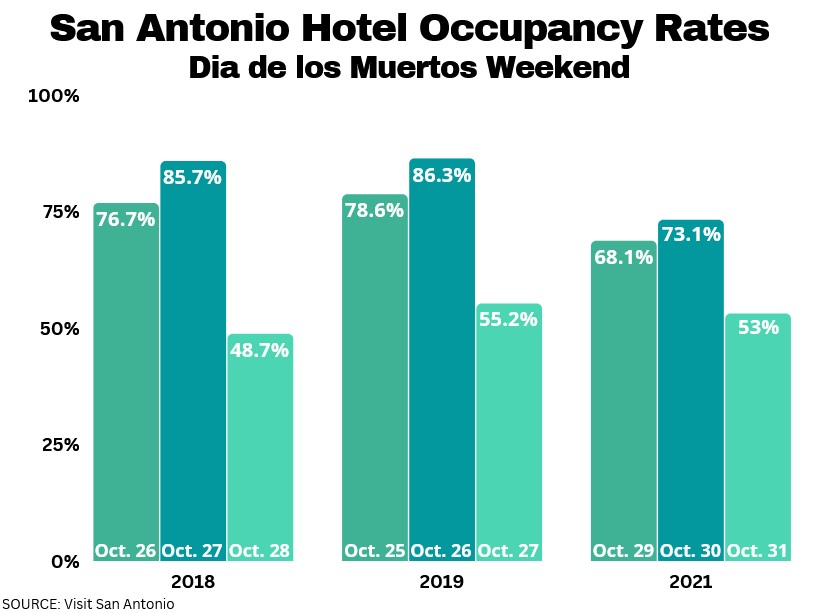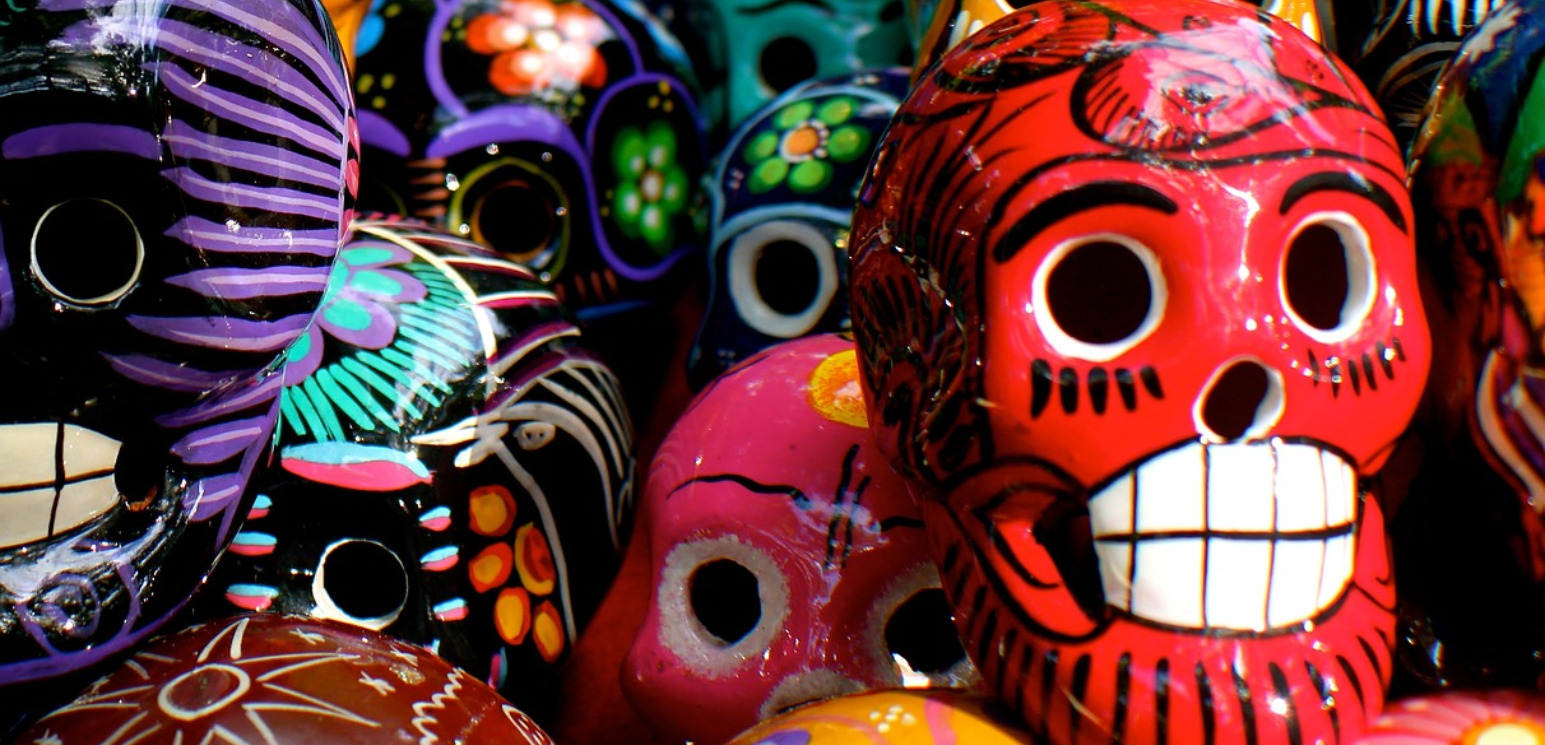El Día de los Muertos or the Day of the Dead is commonly perceived to be the “Mexican Halloween.” However, this is not the case. This holiday is about respecting and remembering those who have passed away. Mexican-American and Hispanic individuals celebrate el Día de los Muertos each year amongst families and small communities. Hispanic consumers are one of the largest in the U.S. with an economic output of $3.2 trillion dollars. For this reason, businesses have been adapting their products and branding to attract Hispanic consumers’ attention. For instance, businesses have been celebrating el Día de los Muertos to re-brand themselves as Hispanic-friendly businesses.
What is Día de los Muertos?
El Día de los Muertos is celebrated each year in early November. According to the National Geographic this cultural tradition is dated three thousand years back to Pre-Hispanic native civilizations such as the Aztec, Toltec, and Nahua. From this tradition, it was believed that souls would travel a journey of seven years. And, each year families provide food, water, and resources at their graves to help the deceased endure their tough journey.
In Spain and Roman Catholic European areas, the pagan tradition of celebrating the dead was adopted into two holidays: All Saints Day (November 1) and All Souls Day (November 2). During the Día de los Muertos, the souls of those who passed away return to celebrate with their families and loved ones. Celebrations include drinking wine, eating pan dulce (sugary bread), dancing, and playing music. The deceased are the primary guests of this celebration and families make sure to honor their life through pictures, offerings, and their favorite foods using ofrendas. The ofrendas are brightly decorated with marigolds (or cempasuchil), fruit, tortillas, candles, bread, and atole. Families who celebrate also paint their faces as calaveras (skulls) or wear skull masks.
The Economics of Día de los Muertos
The Día de los Muertos holiday has been known to become more commercialized in the past few decades. In Mexico alone, this holiday generates approximately $1.8 billion. For instance, Mexico City tourists who attend the Day of the Day Parade make up a lot of that economic revenue at $45.5 million using hotel and tourist services.
In the U.S. the Disney film industry’s Coco from 2017 has yielded $807 million and 20th Century Fox Animation’s Book of Life from 2014 has grossed $100 million. Target and Walmart have also embraced this cultural tradition by offering many Day of the Dead products such as t-shirts, banners, skulls, balloons, papel picado, lanterns, candles, table runners, among other themed products. While these movies and some companies have been highly criticized for monetizing or exploiting the cultural tradition, they have also increased awareness of the cultural holiday to the masses. To find out the perception of Hispanic consumers about this issue, a survey from the Collage Group indicated that 32% of Hispanics believe that all brands and companies should celebrate the Day of the Dead and 26% indicate that only certain brands and companies should do it.
Consumer Popularity of Día de los Muertos in Texas
Texan cities such as San Antonio have been celebrating Día de los Muertos in a format of a river parade called “Muertos Fest,” which has increased economic revenue to businesses located in San Antonio from having over 120,000 people show up at the event. The graph below depicts the hotel occupancy rates of San Antonio’s hotels during the Day of the Day weekend over the past few years.

Other cities have also followed along with their own Day of the Dead parade. The parade in Dallas, TX has attracted 40,000 visitors, who often stay at hotels and eat at local restaurants. Also, Amarillo, TX has been celebrating the Día de Los Muertos with a parade, festival, and a fun run.
A Houston artist and brewery owner of Saint Arnold Breweing Co., Carlos Hernandez, was inspired by the Day of the Dead holiday. As a result, he designed the graphics and label of the beer to be a calavera or skull-head, which currently sells 250,000 bottles and cans each year.
Why should businesses celebrate Día de los Muertos?
There are three important reasons why businesses should consider celebrating Day of the Dead.
- Show appreciation and respect for the cultural holiday. By celebrating this holiday, businesses can show appreciation and respect by using this celebration to educate the citizenry about the holiday. For instance, promoting basic facts or stories about the cultural tradition through flyers, commercials, or social media can generate appreciation of the holiday.
- Increase marketability of your business among Hispanic consumers. The demand of the Día de los Muertos holiday is increasing each year and it is important to develop products and services that relate to this holiday to avoid losing out on potential financial earnings. By celebrating this holiday, businesses can attract new and returning Hispanic consumers.
- Increase networking with other local businesses who also celebrate the holiday. Because more businesses are celebrating the Day of the Dead in the U.S., new and struggling businesses that celebrate this holiday can join a giant network of businesses that also celebrate this tradition. Co-sponsored parades, festivals, concerts, and events can open up unexplored business networking opportunities.
Celebrating Día de los Muertos
As a business you can demonstrate support for the Day of the Day holiday by hosting festive events and offering theme-related products and services.
Host Festive Events
Día de los Muertos Night
Businesses can host a Día de los Muertos night or event by enabling families to build their ofrendas. Further, business owners can encourage customers to bring their offerings such as fruit, food, candles, and pictures to decorate their altars. Businesses can also sponsor a traditional Mexican dinner with music to celebrate as a community.
Community Parade
Businesses can also sponsor or co-sponsor a community parade to celebrate Día de los Muertos to encourage individuals to dress up as calacas (skeletons) and paint their faces as calaberas (skulls). Doing so will bring much exposure to their business brand to many tourists and citizens. Business employees and their families can also join in the celebration by walking or decorating a float.
Provide Día de los Muertos Products and Services
There are also several products and services that can be provided to help the community that celebrates Día de los Muertos.
Ofrenda Decoration Products
- Marigolds (flower of the dead)
- Salt
- Incense
- Crosses
- Candles
- Calaveras (skulls)
Food and drinks
- Sugar calaberas (skulls)
- Sweet bread (bread of the dead)
- Fruit
- Tamales
- Pozole
- Tortilla soup
- Caramel flan
- Tequila and beer
- Atole
- Champurrado
- Mexican hot chocolate
- Sopaipillas (fried dough)
Skeletal Products
- Face painting
- Masks
- Puppets
- Costumes
- Arts and crafts
Being appreciative
In sum, it is important to educate oneself about the Día de los Muertos tradition. Doing so, will ensure that businesses celebrate it with respect and appreciation. Business owners who decide to celebrate this tradition must ensure to respect the cultural needs of their clients and should consider obtaining their immediate feedback about any products or services that are being offered. Businesses that embrace this cultural tradition may soon find out what they have been missing all along.
Leslie Ramos Salazar
Associate & Abdullat Professor of Business Communication and Decision Management


